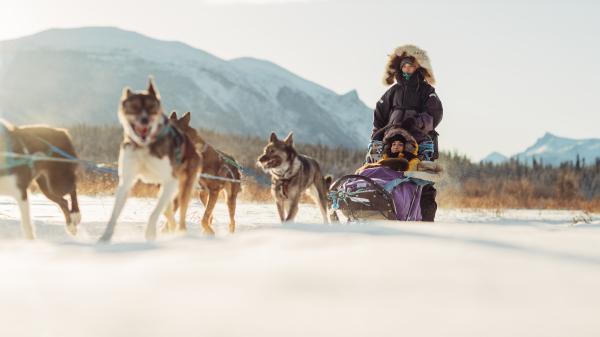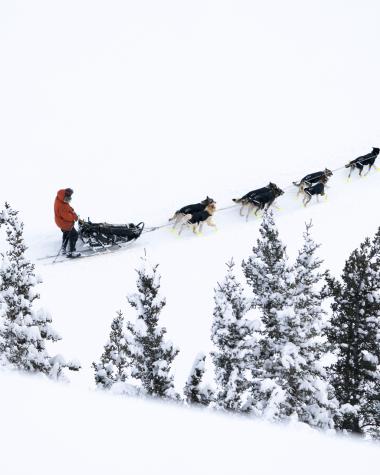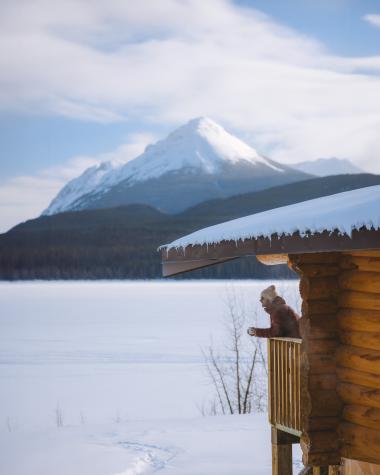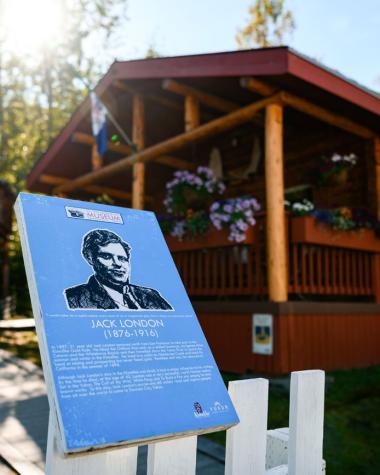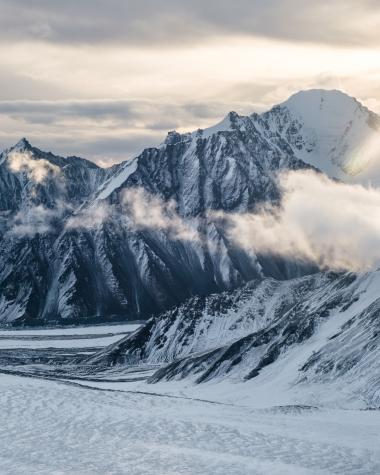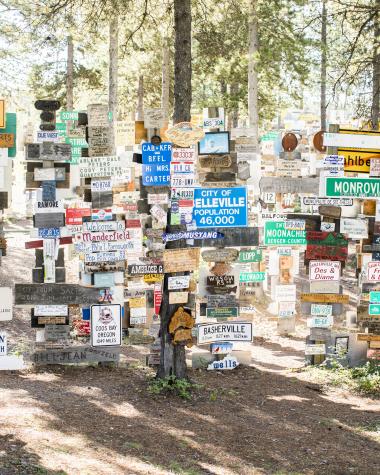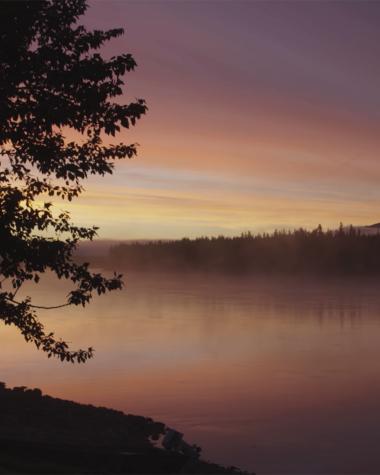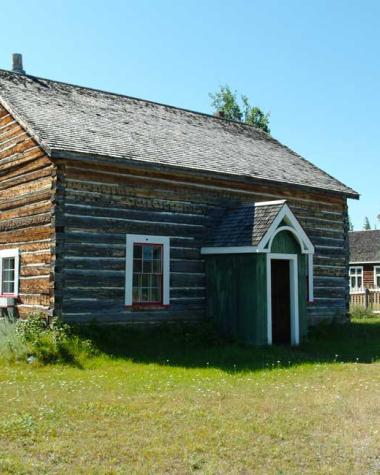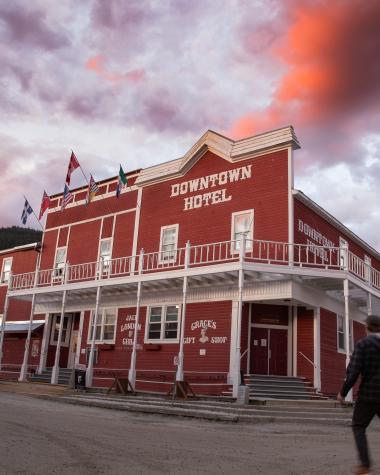
Heritage, Arts & Culture Gold panning made easy
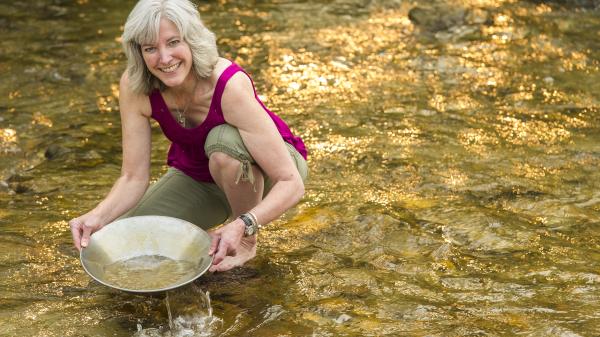
Calling all gold diggers and panhandlers
If you’ve got gold fever, the Yukon is the place to be. So, to help you get started in your new gold panning career, we’ve simplified our vast knowledge on the subject down to this easy-to-skim guide. If it’s insider tips and tricks you’re after, read on.
Let’s talk tools
Before we get to the gold pan, shovel and snuffer bottle, we should talk about keeping your feet warm and dry. Gold panning is done in the water—usually in icy cold mountain streams. You would get real cranky, real fast without a pair of waterproof boots and some warm socks. And you know what they say about cranky panners: well nothing, really. But they’re still miserable. So keep those tootsies dry.
When it comes to pans, you have two choices: metal or plastic. If you fancy feeling like an old-timey prospector, steel pans are the way to go. However, plastic pans are more popular as they don’t rust or corrode. The coloured pans (typically green, red or black) provide enough contrast for you to quickly identify the gold at the bottom of your pan, and the riffles molded into the side walls of most pans act as tiny gold traps. Gold pans can be purchased at Canadian Tire in Whitehorse; or at Home Hardware, Gold Bottom Mine Tours, the Dawson Trading Post, or Claim 33 in Dawson City.
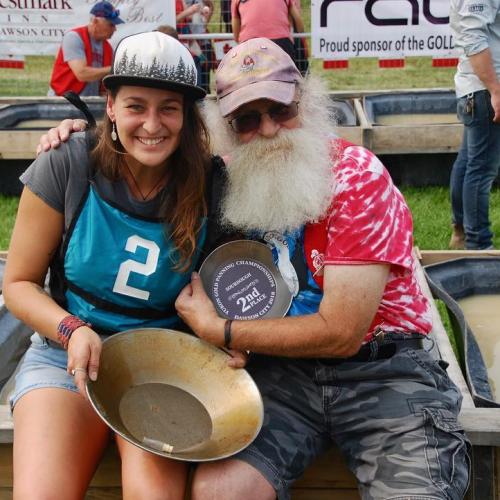
Now that you have warm feet in your boots and gold flakes in your pan, what more could you want? Besides streamside pizza delivery and a custom-built gold panning robot, there are a few optional tools that could come in handy: a shovel or trowel for digging, tweezers for picking up gold flakes, a snuffer bottle for sucking them up, and a glass vial (or five!) for storing all of your hard-earned gold.
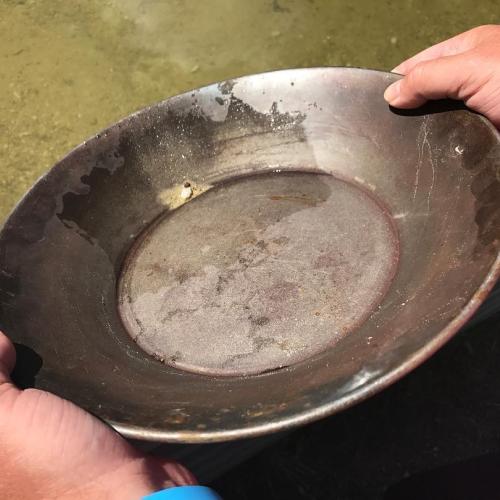
Let’s talk location
Looking for a place to learn to pan? It's best to go learn from some of our great local providers. In Dawson City, Claim 33 offers training on how to pan, at km 13 on Bonanza Creek Road. Further down this historic creek, you'll find Klondike Visitors Association's Free Claim No. 6, where you can pan for free at their claim. Bring your own tools and stay within the boundaries of their claim. Goldbottom Mine Tours, offers daily trips to their active mine, where you get to test their ground at the junction of Hunker and Goldbottom Creeks. Looking to go stake something for yourself or to do some more serious prospecting? Contact our friends at the Mining Recorder's Office and they'll help you figure out your next step on the road to gold glory.
Gold is heavy. So you won’t find it floating on the river’s surface. It’s likely to settle where the water slows down, such as the inside of river bends. Gold also collects under big rocks or inside crevasses. So remember to dig deep.
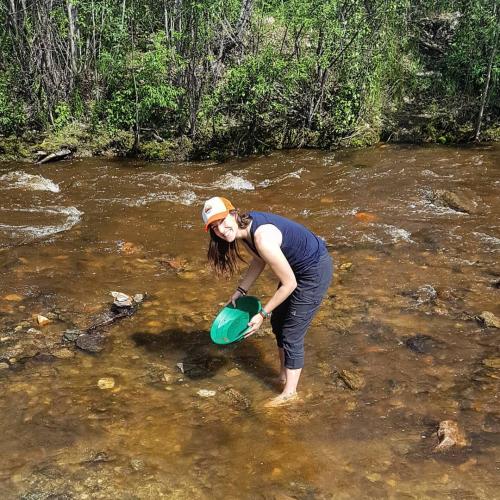
Make sure you test a few spots along the river before settling in for the day. A slow-moving stream or river is ideal, and if you can find one with a large rock or log for you to sit on—well, that’s the good life. Always follow mining etiquette (yes, it exists) and fill in open holes or rocks dislodged while digging. It’s like Mom always said: put things back where you found them. Thanks Mom.
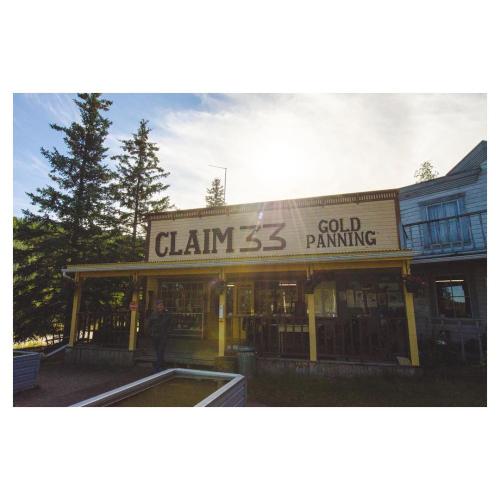
Let’s talk technique
Panning is a process of separation—you separate the gold from everything that isn’t gold. Sure, it sounds simple. But you can go crazy trying to find those miniscule gold flakes. Over time you’ll develop your own technique. For now, you can borrow ours:
- Fill your pan up with gravel.
- Remove large rocks by hand, taking care to rinse them with water to uncover any stray gold clinging to them. Break up any clumps of clay.
- Submerge the pan in the water. Agitate the gravel by swirling the pan with a vigorous side-to-side or circular motion. Put some muscle into it. The gold will settle at the bottom of the pan.
- Now here’s the fun part: tip the pan away from your body at a slight angle to wash away the top layer of gravel from your pan. With any luck, you’ll discover gold.
- Now rinse and repeat, literally.
- When all you have left is a very small amount of black sand, pick out any gold flakes (or nuggets, if you’re really lucky) with your tweezers. Use your snuffer bottle to pick up any fine gold left behind.
- Keep prospecting! It may not make you rich, but it’s guaranteed to be rewarding.
